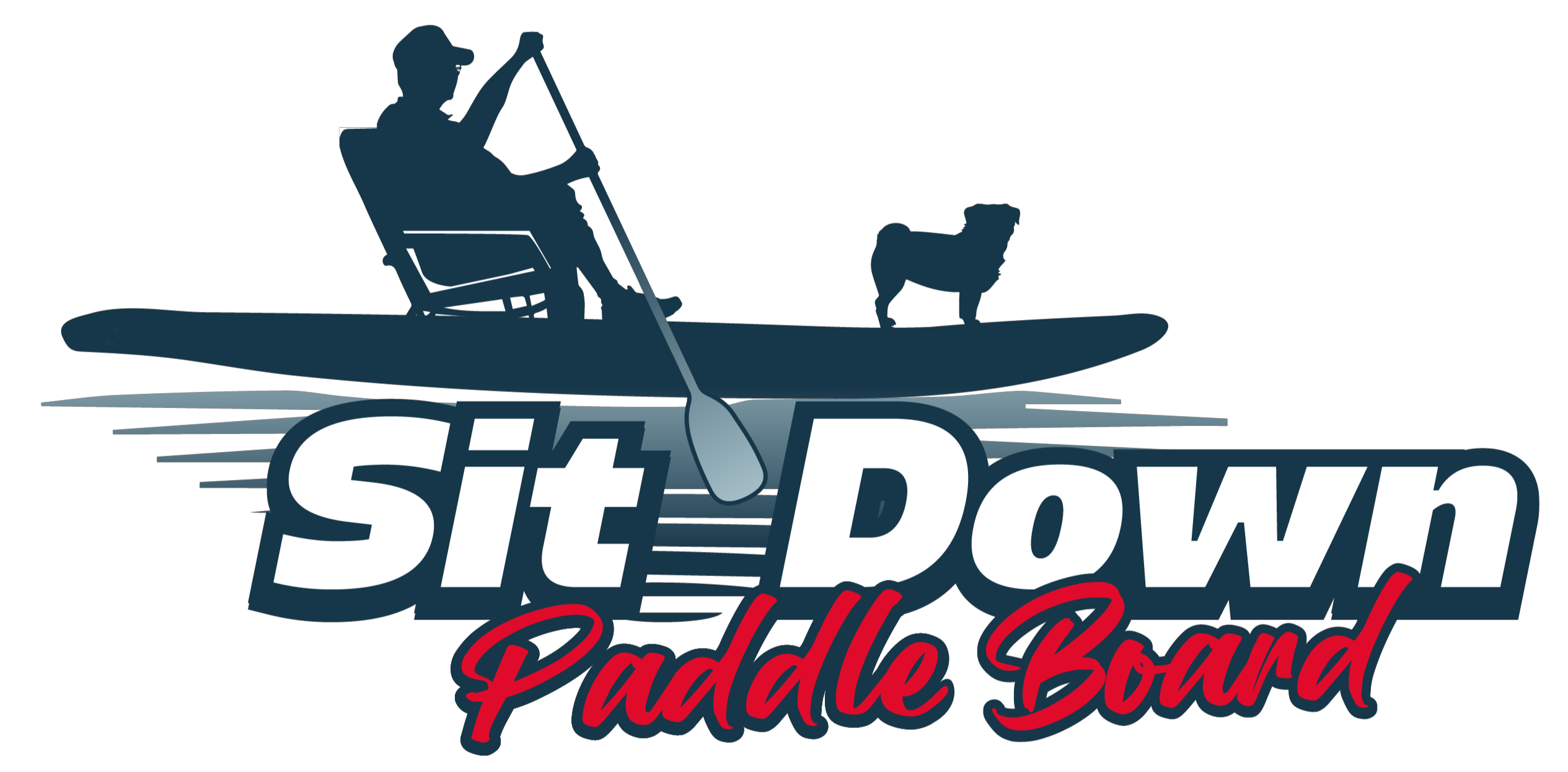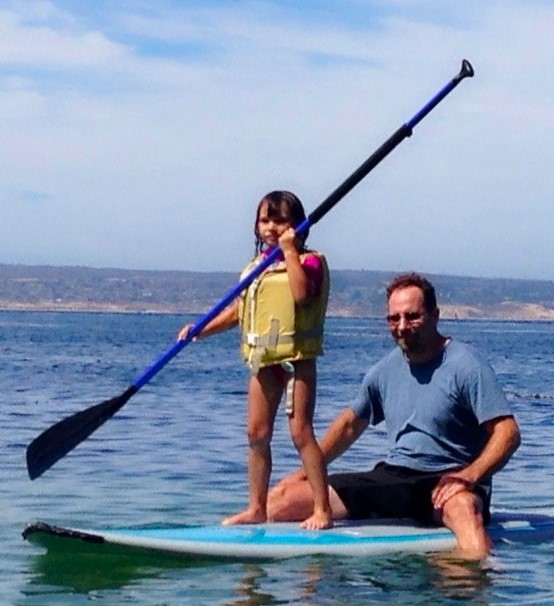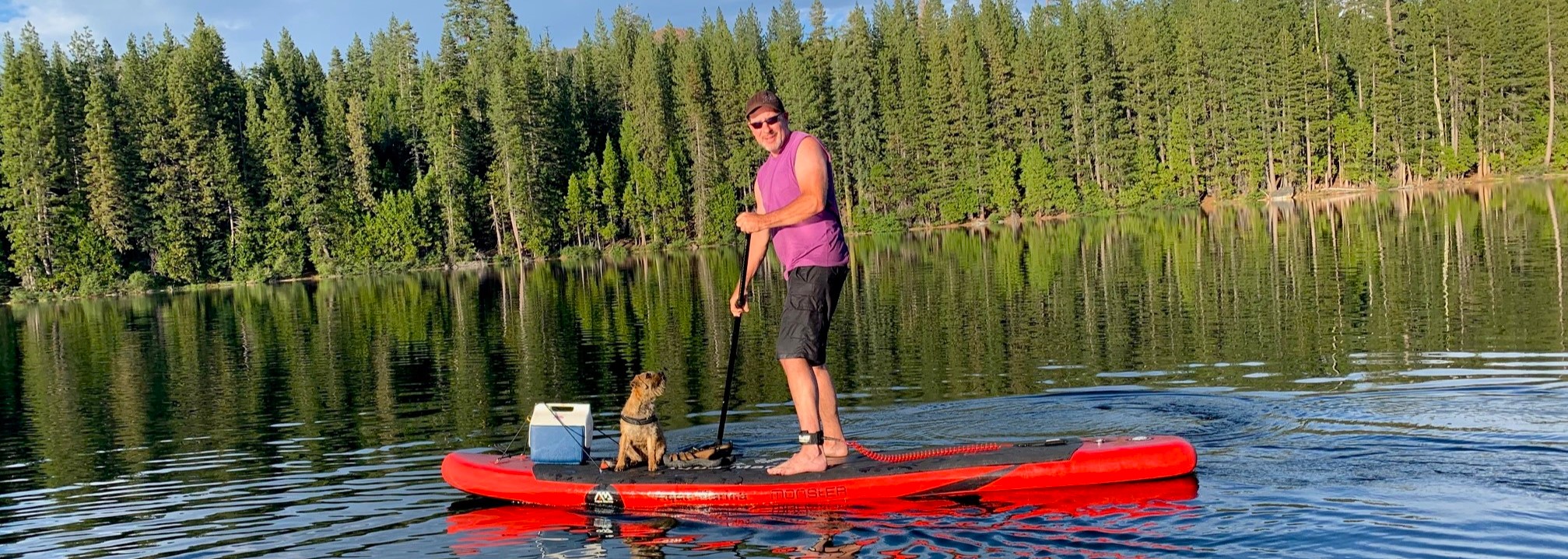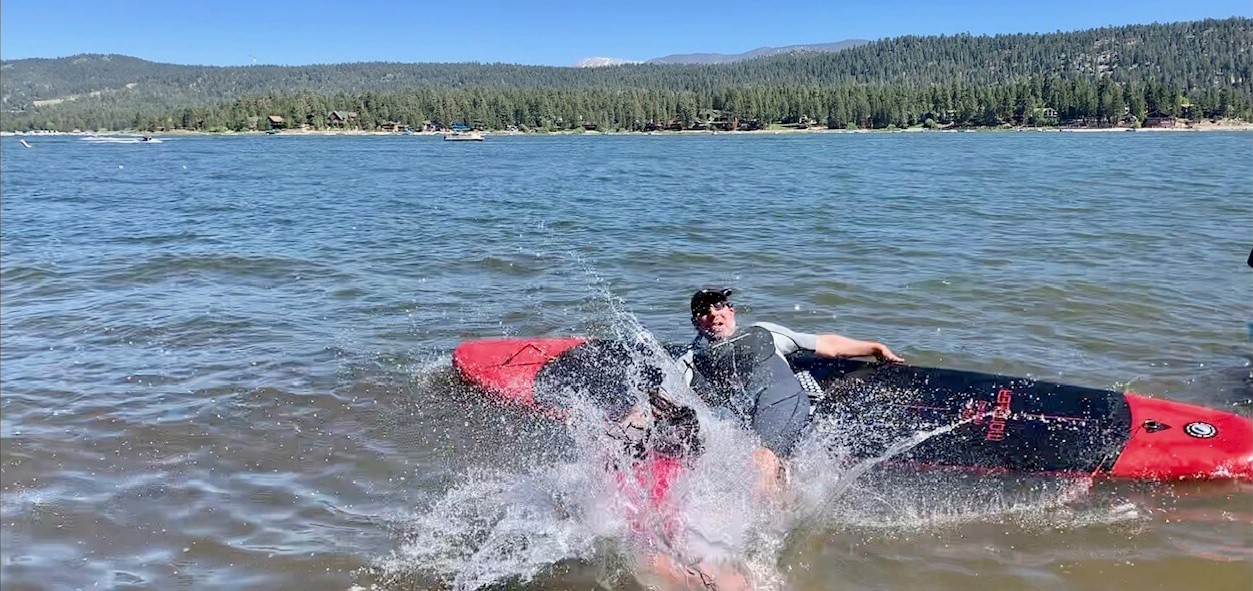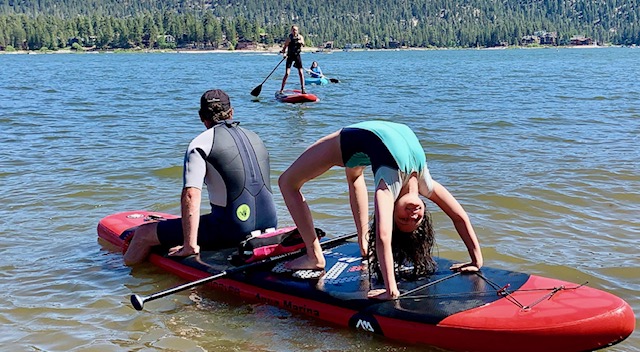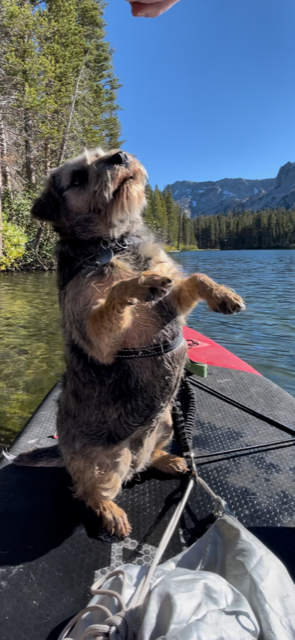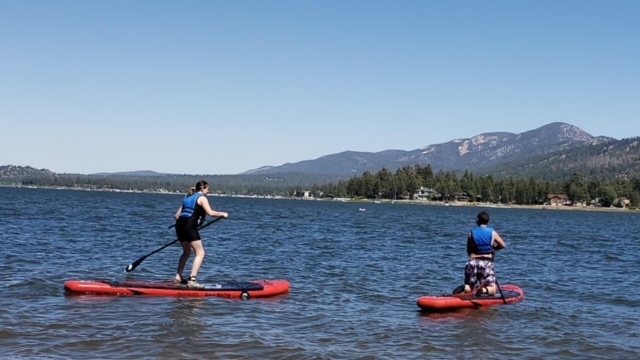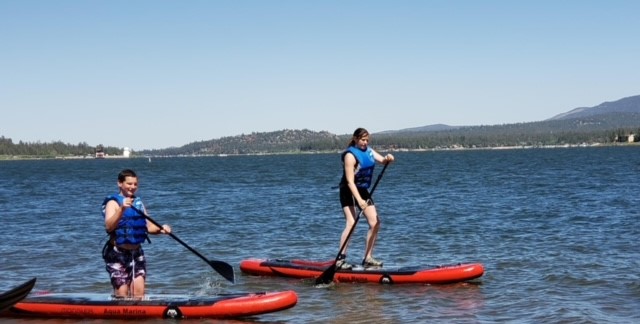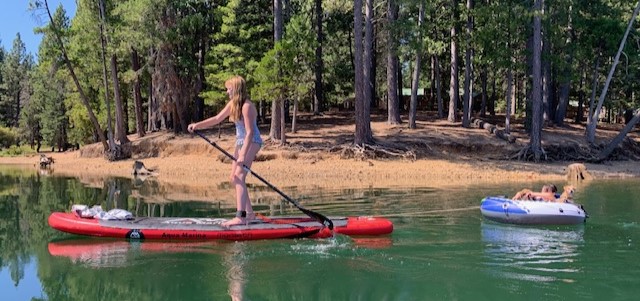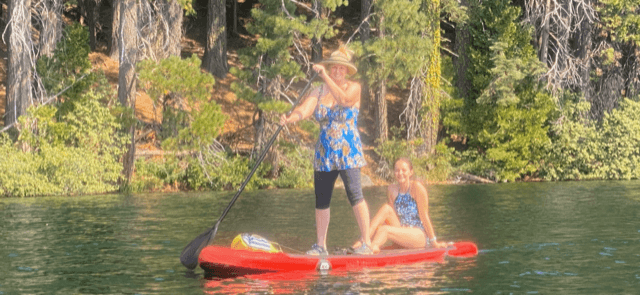How to Paddle Board
Interested in learning how to paddle board? We created this page and video series in response to your most asked questions. Here are the 10 most important things that paddlers need to know when they are getting started or wanting to branch out:
- Different Types of Paddle Boards: Beginners would want to know about the different kinds of paddleboards and which one would be best suited to their size, skill level, and intended use.
- Basic Techniques: This would include how to stand up on the board, how to balance, turn, and stop.
- Equipment Needed: Information on the essential gear needed, such as the paddle board itself, the paddle, a leash, personal flotation device (PFD), and appropriate clothing.
- Safety Measures: They would want to know safety precautions which should be followed to prevent accidents, such as staying aware of the surroundings, weather conditions, and under what conditions to not paddle board.
- Best Locations: Finding out the best spots or types of water bodies suitable for paddle boarding, including calm lakes, gentle ocean waves or rivers.
- Physical Conditioning: Understanding what kind of physical shape one needs to be in to paddle board and what exercises can help improve paddle boarding skills.
- Rules and Etiquette: They'd like to know the basic rules of the road on the water, including right of way rules, maintaining distance from swimmers and vessels, and respecting nature and wildlife.
- How to Fall: Falling off the board properly is crucial to avoid injury.
- How to Get Back On: After you fall off, there's a technique to getting back on the board efficiently from deep water.
- Tips and Tricks: Searching for professional tips or common tricks to make the paddle boarding learning process easier could be a common query for beginners.
How to Paddle Board Video Series - Click on the Image to watch the Video!
Paddle boarding is a terrific amount of fun and almost anyone can paddle board! Our entire family, including our young kids and Julie’s 85-year-old mother routinely get out on the water and have fun.
This video series features Julie, a 54-year-old woman with bad knees and a bad back. Let her be an inspiration to you. If you are worried that you are not coordinated enough, don’t have great balance, may be too old to try paddle boarding for the first time, are a bit afraid, etc., don’t be!
Let us show you how easy and fun it is to paddleboard. Let us also share our secrets for ensuring you have a good time, can relax on a paddle board, feel comfortable maneuvering your board, find ways to paddle board that you enjoy, etc. For even more how to paddle board information be sure to also read our page How do you Paddle Board!
How to Paddle Board – Your Questions Answered
Embarking on the journey of paddleboarding can be thrilling yet filled with many questions, especially for beginners. As you delve into this exciting water sport, it's natural to take to the internet to quench your curiosity. Whether it's understanding the technicalities of the sport, acquiring the right gear, or gaining knowledge about safety measures - orientations cover various domains. To make the quest less daunting for you, we've summarized the ten most important things that beginners typically need to know to know when they search "How to Paddle Board?".
Ranging from the different types of paddleboards, grasping the basic techniques, knowing the right equipment to carry, to understanding safety protocols - there's a myriad of elements to consider. What's more, details like ideal locations for paddle boarding, the physical conditioning required, the rules, and etiquette of the sport are also crucial. It's also handy to know how to get back onto your board after a fall, and professional tips can always add that extra zing to your overall paddleboarding experience. Dive in as we expand on these key points to help you make the most out of your paddle boarding journey.
1. Different Types of Paddle Boards: There are several kinds of paddle boards based on their function. All-Around boards have a rounded nose and are the best for beginners due to their diverse use - they are perfect for leisure paddling, yoga, fishing, and even light surfing. Touring or race SUPs are long, narrow boards with a pointed nose to cut effectively through the water, making them perfect for long-distances and race events. Yoga SUPs are wider and longer than typical boards to provide stability during yoga and fitness workouts. Inflatable SUPs are an excellent choice for travelers since they deflate for easy transportation and storage.
Just an FYI, we routinely paddle our inflatable 12’x33”x6” Aqua Marina Monster paddle boards for miles down the coastline and around large reservoirs. Therefore, not all touring boards need to be long and narrow, especially if you are planning to sit down in a seat and paddle for part of the time.
2. Basic Techniques: Start by becoming familiar with the board in calm waters. Once you feel comfortable, stand up one foot at a time while maintaining a hold on either side of the board. Keep your feet parallel in the middle of the board, hip-width apart, with toes pointing forward. Slightly bend your knees and keep your back straight, use your waist to adjust your balance. The paddle should reach your wrist when you extend your arm above your head, this is the optimal paddle length.
3. Equipment Needed: Beyond a good-quality paddle board, you'll need a paddle, usually about 10 inches longer than your height. A leash is crucial to prevent your board from floating away if you fall off. A PFD is a legal requirement in many places and a good idea for safety purposes. The right clothing and shoes for paddle boarding largely depend on weather conditions, but generally, keep it light and quick drying.
- Read more about the Best PDF’s for Paddle Boarding
- Read more about the Best Paddle Boarding Paddles (SUP, Convertible & Kayak)
4. Safety Measures: It's essential to respect nature when paddleboarding to protect both yourself and the environment. Always check the weather conditions before you start. Start in a calm lake or bay and avoid venturing too far from the shore. Keep an eye out for local marine life and give them plenty of space. Remember to hydrate and apply sunscreen regularly.
5. Best Locations: Your abilities and confidence level should guide your choice of location. Beginners should seek calm, flat waters such as small lakes, gentle bays, or quiet rivers. Gradually, you can venture out into obstructions or stronger currents. Familiarize yourself with the area and any potential hazards, such as hidden rocks or busy boating routes.
6. Physical Conditioning: Basic levels of physical fitness can suffice for paddleboarding. But enhancing your endurance and core strength positively impacts your balance, enabling you to have longer sessions. Exercises benefiting overall balance also contribute positively to your paddleboarding experiences.
7. Rules and Etiquette: Keeping clear of high-traffic routes used by larger boats, leaving plenty of space to swimmers or other boats, and areas marked as 'no-go zones' are essential points of etiquette in water sports. Respecting nature is an integral part of paddleboard etiquette. It includes not disturbing local marine fauna and refraining from polluting the water in any way.
8. How to Fall: As a beginner, falling off your board may happen from time to time. When you feel unstable, aim to fall in the water to the side or to the front of your board to minimize the risk of injury.
9. How to Get Back On: Retrieve your board by pulling the leash. Once at the side of the board, near the middle, grab the handle, kick with your legs, and use your upper body strength to slide yourself onto the board.
10. Tips and Tricks: Begin your paddleboarding adventures in calm waters, and take it step by step - don't rush yourself. Paddling comes from your core - it’s more efficient and less tiring than using your arms. Reapply sunscreen every few hours, wear a hat or sunglasses to protect from reflected rays on the water, stay hydrated, and make sure to have fun!
One last tip for learning how to paddle board
As we wrap up, it's clear that learning how to paddle board involves a mix of understanding critical safety measures, mastering technical skills, becoming familiar with important equipment, and respecting the marine environment.
An important tip for beginners aiming for a great paddle boarding experience is to stay relaxed and patient. This may seem obvious, but beginners often tense up when they get on the water, which can make the board feel unstable.
The more relaxed you are, the more your body will adapt to the motion of the board on the water. Steadily focus on your balance, movements, and rhythm rather than speed or mastering complex maneuvers. Julie uses the mantra, “knees bent, eyes to the horizon” any time she feels unstable on her paddle board. This reminds her to bend her knees and sink down into her stance like a chi gong master.
As you venture into this exciting water sport, remember to start at a slow pace and gradually work up to complex maneuvers and challenging waters. Above all, patience, practice and a respect for the ocean will go a long way in adding to your enjoyment.
Remember to embrace the falls and mishaps along the way as part of the learning process, and most importantly, enjoy the experience! Paddleboarding is an opportunity to connect with nature, improve fitness, and have fun. Enjoy the journey as much as the destination!
So, as you embark on your paddle boarding journey, keep these top ten things in mind, extend your competence with every new wave, and most importantly, enjoy every moment on the water. Happy paddle boarding!
We hope to see you out on the water!
